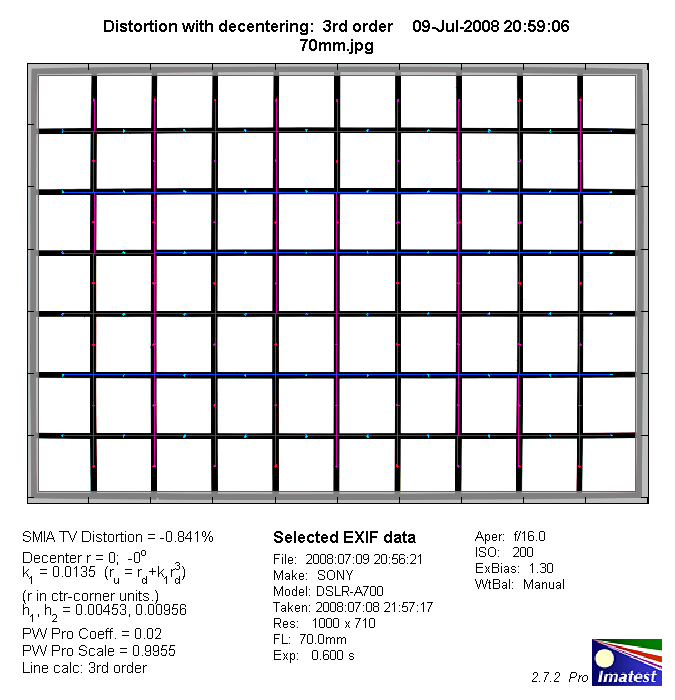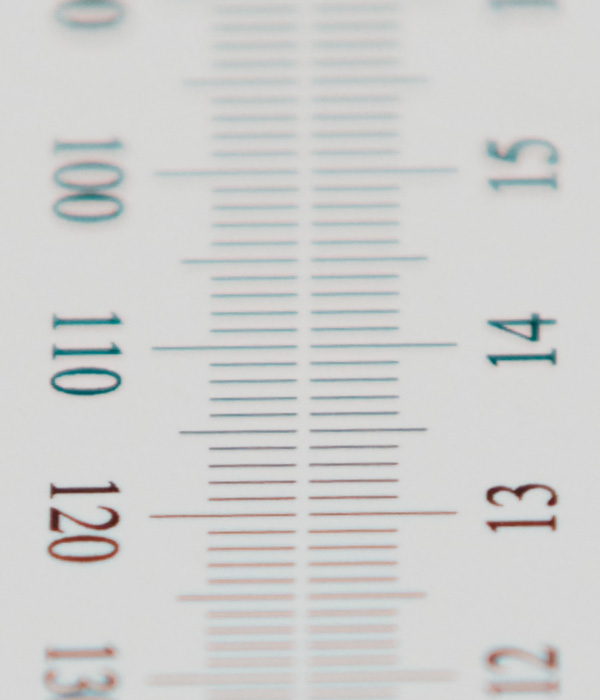|
Sony 70-200mm f/2.8 SSM G (SAL-70200G) - APS-C Review / Test Report - Analysis |
|
Lens Reviews -
Sony Alpha/NEX (APS-C)
|
|
Page 2 of 3

Distortion
Typical for such large aperture zoom lenses the Sony lens has a fairly unambitious 3x zoom ratio which is a good basis for a low level of distortion. The lens shows only moderate barrel distortion (~0.8%) at 70mm changing to slight pincushion distortion at 200mm (~0.4%).
|
Move the mouse cursor over the focal length text marks below to observe the respective distortion
|
| 70mm |
135mm |
200mm |

|
The chart above has a real-world size of about 120x80cm.
Vignetting
Thanks to the full format design the amount of vignetting (on APS-C DSLRs) is not field-relevant at 70mm and 135mm. The problem increases slightly towards 200mm (~0.6EV) but even so it's usually a non-issue.

MTF (resolution)
The Sony G produced very good to excellent resolution figures in the MTF lab. The performance is best at 70mm with a generally excellent quality across the image field. There's a slight decrease in performance towards the long end of the zoom range with "only" very good figures at f/2.8. The center performance is excellent again at f/4 followed by very good to excellent borders. Field curvature is a non-issue.
Please note that the MTF results are not directly comparable across the different systems!
Below is a simplified summary of the formal findings. The chart shows line widths per picture height (LW/PH) which can be taken as a measure for sharpness.
If you want to know more about the MTF50 figures you may check out the corresponding Imatest Explanations
Chromatic Aberrations (CAs)
Lateral chromatic aberrations (color shadows at harsh contrast transitions) are
generally well controlled. You may still be able to notice hints of CAs (~1px) near
the image borders when using the extreme ends of the zoom range.

Needless to say but you can correct or at least reduce lateral CAs during post-processing
e.g. via Photoshop.
Bokeh (out of focus blur)
The quality of the bokeh (the out-of-focus blur) is a major aspect in this (large aperture) lens class. It may cause a little disturbance in the community but the Sony lens doesn't seem to be the very best kid around the block here - at least not around the 135mm setting which was primarily analyzed. Out-of-focus highlights are circular but show a fairly obvious outlining at f/2.8 and busy backgrounds are not handled overly well. The situation improves when stopping down. Please note that the effect is also visible in some of the sample images at the end of this review so it's not only a stress test scenario. The real world images indicate that the situation seems to be better at 200mm. That all said you can surely achieve a very good bokeh in non-critical scenes but there're simply lenses with a better quality here.

Here's a full size sample @ f/2.8.
Longitudinal (Axial) Chromatic Aberrations (LoCA)
LoCAs (non-coinciding focal planes of the various colors), sometimes called "bokeh CAs", can be a slight problem in the field. As you can notice below the halos have different colors - magenta (red + blue) in front the focus point and green beyond. This is a bit disappointing regarding the number of UD elements used in the design.
|
Move the mouse cursor over the f-stop marks below to observe the respective LoCAs
|
| f/2.8 |
f/4 |
f/5.6 |
|

|
|